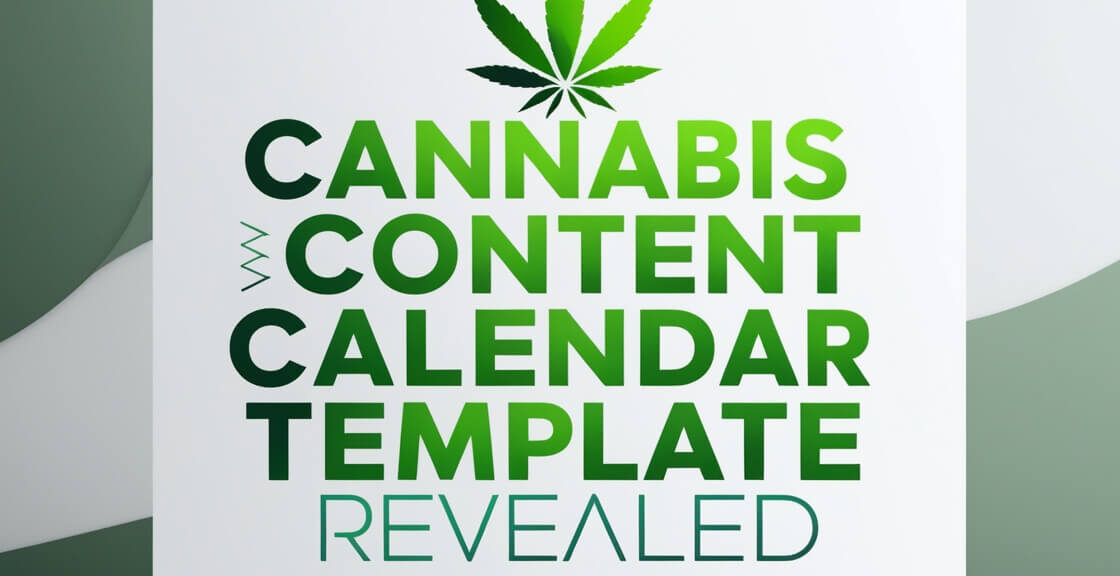Understanding Cannabis Content Strategy
Benefits of a Content Calendar
When it comes to managing content for the cannabis industry, having a content calendar can be a game-changer. A well-structured content calendar helps in organizing and planning content, ultimately driving better results for your business. According to Sprout Social, 64% of successful companies have a documented content strategy that includes a content calendar.
Weed SEO Company specializes in SEO for the marijuana industry. We help marijuana & CBD businesses grow. Book a call today!
Here’s why a content calendar is beneficial:
- Organization: Keeps all your content plans in one place.
- Time Management: Saves time by streamlining the content creation process.
- Consistency: Ensures regular posting, maintaining your brand’s presence.
- Tracking Performance: Provides a way to monitor and analyze the effectiveness of your content.
To get started with your own content calendar, check out our complete guide to cannabis marketing and SEO (2024).
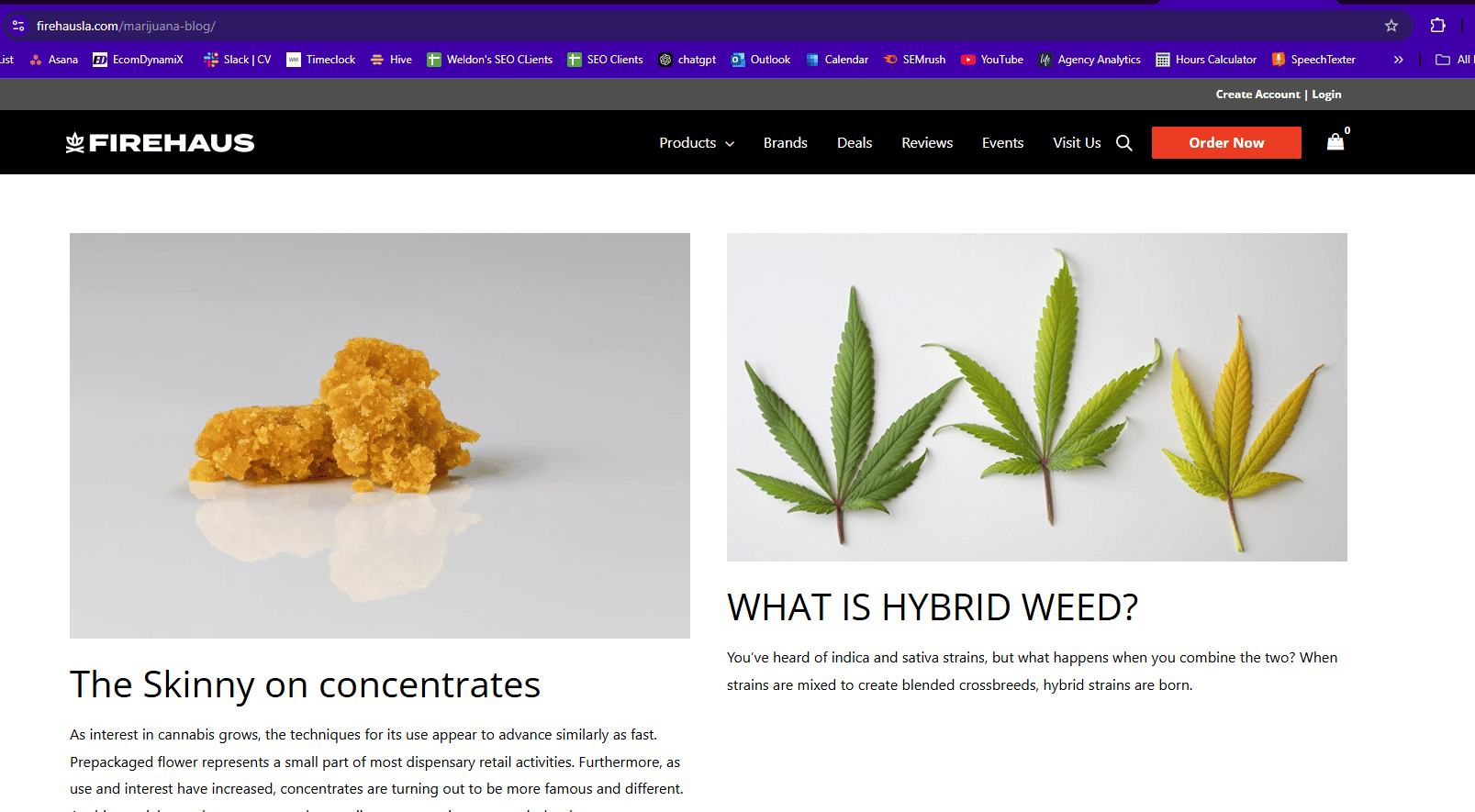
Importance of Consistency
Consistency is key in the cannabis industry, just like in any other sector. A content calendar helps maintain this consistency by setting clear posting schedules and routines. This is particularly important in maintaining a cohesive brand voice and style across all platforms (Sprout Social Insights).
Here are some ways consistency can benefit your cannabis business:
- Brand Trust: Regular posting builds credibility and trust with your audience.
- SEO Benefits: Frequent updates and fresh content improve your search engine rankings.
- Engagement: Keeps your audience engaged and coming back for more.
By sticking to a consistent publishing schedule, you can effectively grow your audience and improve your search engine rankings. For more details on building a consistent SEO strategy, check out our article on how to create a cannabis SEO strategy from scratch.
| Benefit | Description |
|---|---|
| Organization | Centralizes all content plans and schedules. |
| Time Management | Streamlines content creation, saving time. |
| Consistency | Ensures regular and timely posting. |
| Performance Tracking | Monitors and analyzes the impact of your content. |
For more on maintaining a consistent SEO approach, you may also explore our guide on cannabis SEO ranking factors: what really matters in 2024.
In conclusion, implementing a cannabis industry content calendar template can significantly benefit your marketing efforts by ensuring organization, saving time, maintaining brand consistency, and improving your overall search engine rankings. For further reading, check out our articles on local SEO for dispensaries and how to write SEO-friendly cannabis content.
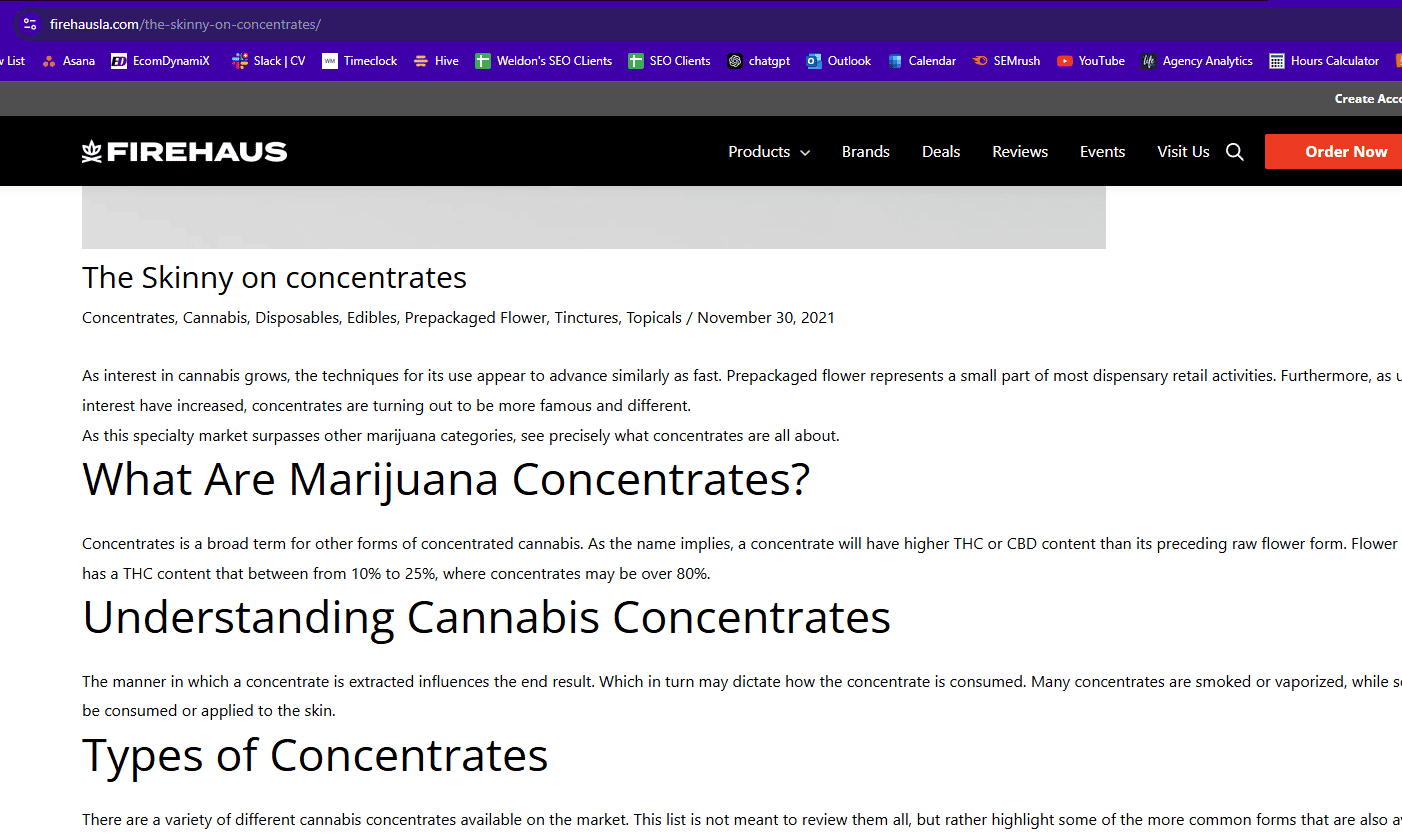
Planning Your Cannabis Content Calendar
Creating a strategic plan for your content is key to standing out in the competitive cannabis industry. Here’s my take on the factors and seasonal relevance to consider when planning your cannabis content calendar.
Factors to Consider
When planning your cannabis industry content calendar template, there are several key factors to consider:
- Audience Insight: Understanding your audience’s preferences and behavior is paramount. By knowing what your audience wants, you can tailor content that resonates with them.
- Content Types: Diversify your content types, such as blog posts, social media updates, videos, and infographics, to keep your audience engaged. Check out how to write seo-friendly cannabis content (without getting flagged).
- SEO Integration: Incorporate high-volume keywords in your content strategy. Refer to cannabis keyword research: finding low-competition terms for more insights.
- Internal Collaboration: A well-maintained content calendar enhances transparency and collaboration within your team, ensuring that everyone is on the same page and aligned with your content goals.
- Content Posting Frequency: Plan the frequency of your posts to maintain regular engagement. Consistency is key to building a loyal audience.
Seasonal Relevance
Seasonal relevance is essential in maintaining engagement and demonstrating that you’re in tune with current events and trends. Here are some seasonal factors to consider:
- Holidays and Events: Plan content around popular holidays and cannabis-specific events like 420. This can boost engagement and relevance.
- Growing Seasons: Align content with cannabis growing seasons. Share tips and resources for each stage of the growing process.
| Season | Relevant Content |
|---|---|
| Spring | Planting tips, product launches |
| Summer | Growth maintenance, outdoor events |
| Fall | Harvesting techniques, product promos |
| Winter | Indoor growing tips, holiday-themed content |
Reference Sprout Social for more about seasonality in content planning.
- Company Milestones: Incorporate company anniversaries, product launches, and other significant milestones into your content calendar.
- Promotional Cycles: Plan your content around promotional cycles to maximize engagement and sales. For example, run special promotions during peak sales periods.
Examples for Effective Planning
| Factor | Implementation Example |
|---|---|
| Audience Insight | Poll followers on preferred content |
| Content Types | Mix blog posts with video tutorials |
| SEO Integration | Use keywords from cannabis seo ranking factors |
| Internal Collaboration | Weekly team check-ins on content progress |
| Content Posting Frequency | Schedule 3 blog posts and 5 social media updates per week |
| Seasonal Relevance | Plan a “Winter Harvest” series in December focusing on indoor growing |
By considering these factors and seasonal elements, your cannabis industry content calendar template will be well-structured, ensuring consistent and engaging content throughout the year. For more detailed strategic insights, visit our complete guide to cannabis marketing and seo (2024).
Leveraging SEO in the Cannabis Industry
Let’s dive into the powerful world of SEO and how it can significantly boost your cannabis business. High-volume keywords and building brand authority are essential elements in maximizing your visibility and driving growth.
High-Volume Keywords
Using high-volume keywords in your content is essential for attracting the right audience. According to Big Sea, SEO is a potent marketing strategy in the cannabis industry due to an abundance of high-search, low-competition keywords. This allows your brand to rank for relevant topics, increasing visibility and credibility.
Table: High-Volume Keywords for Cannabis Industry
| Keyword | Monthly Searches |
|---|---|
| “Best cannabis dispensaries” | 18,000 |
| “Cannabis industry trends” | 12,000 |
| “Buy cannabis online” | 9,500 |
| “Cannabis SEO tips” | 5,000 |
| “Local cannabis shop” | 4,200 |
When selecting keywords, prioritizing relevance to your business and ensuring they align with what your target audience is searching for is crucial. A comprehensive guide on how to approach this can be found in our cannabis keyword research: finding low-competition terms article.
Building Brand Authority
Building brand authority in the cannabis industry involves more than just keyword optimization. Establishing your brand as a trusted source requires consistent quality content, strategic link building, and compliance with SEO best practices. By becoming an authority, your brand will enjoy increased trust and engagement from your audience.
To enhance your brand authority, consider the following strategies:
- Quality Content: Developing insightful and valuable content is key. Creating guides, how-tos, and industry reports can position your brand as an expert. Learn more about creating effective content in our how to write seo-friendly cannabis content (without getting flagged) article.
- Link Building: Quality backlinks from reputable sources enhance your site’s authority. Refer to our link building strategies for cannabis businesses for actionable tips.
- Local SEO: Optimizing for local search is crucial, especially since 60% of cannabis users prefer purchasing from local dispensaries (Drive Research). This underscores the importance of establishing a strong local online presence. Check out our local seo for dispensaries: step-by-step implementation guide.
- Consistent Updates: Regularly updating your site with fresh content and new developments in the industry helps keep your audience engaged and signals to search engines that your site is active and relevant.
By using high-volume keywords and focusing on building brand authority, you can effectively leverage SEO to boost your cannabis business. For a deeper dive into these strategies, explore our complete guide to cannabis marketing and seo (2024).
Email Marketing Strategies
Email marketing stands out as a critical component of any effective cannabis industry content calendar. It allows for sustainable customer relationships, tailored messaging, and efficient tracking of essential metrics.
Targeting Cannabis Consumers
Email marketing offers unparalleled returns on investment in the cannabis industry (Big Sea). When targeting cannabis consumers, here’s what you need to focus on:
- Segmentation: Divide your email list into different segments based on demographics, purchase behavior, and engagement levels. This helps in sending highly relevant content tailored to each group.
- Personalization: Use personalized subject lines and content to make your emails relevant and engaging. For instance, include the recipient’s name and recommend products based on previous purchases or browsing history.
- Content Value: Provide educational content about cannabis via blog posts, videos, and webinars. This positions your brand as an authoritative source while ensuring compliance with regulatory guidelines (Drive Research).
- Promotions: Over 70% of people prefer marketing promotions via email (Drive Research). Offer special discounts, early access to products, or loyalty rewards to keep your audience engaged.
| Key Strategy | Implementation |
|---|---|
| Segmentation | Divide list by demographics, behavior, engagement |
| Personalization | Use names, recommend products based on past behavior |
| Content Value | Educational videos, blog posts, webinars on cannabis |
| Promotions | Discounts, early access, loyalty rewards |
For a deeper understanding of creating an effective cannabis content strategy, refer to our complete guide to cannabis marketing and seo (2024).
Tracking Metrics
Tracking the performance of your email marketing campaigns is crucial. It provides insights into what’s working and where adjustments are needed. Key metrics to monitor include:
- Open Rates: Measure the percentage of recipients who open your email. A higher open rate indicates that your subject lines and send time are effective.
- Click-Through Rates (CTR): Calculate the ratio of recipients who clicked on links within your email versus those who opened it. A higher CTR signifies successful engagement with your content.
- Conversion Rates: Track how many recipients performed the desired action, such as making a purchase or filling out a form. This metric is a direct indicator of your email campaign’s effectiveness.
- Bounce Rates: Identify the percentage of emails that couldn’t be delivered. A high bounce rate can indicate issues with your email list quality.
- Unsubscribe Rates: Measure how many recipients opt out of your email list after a campaign. Monitoring this helps in maintaining a healthy email list and improving content relevance.
| Metric | Definition |
|---|---|
| Open Rates | Percentage of recipients who open your email |
| Click-Through Rates (CTR) | Ratio of link clicks to email opens |
| Conversion Rates | Number of recipients who completed desired actions |
| Bounce Rates | Percentage of undelivered emails |
| Unsubscribe Rates | Recipients opting out after receiving your email |
For more detailed insights, explore our guide on how to track cannabis seo performance and other relevant SEO metrics.
Creating an effective email marketing strategy, complemented by a well-planned content calendar, can significantly enhance your brand’s outreach and customer engagement. To dive deeper into SEO strategies specific to the cannabis industry, check out our article on how to create a cannabis seo strategy from scratch.
Harnessing the Power of Cannabis Influencers
Leveraging the influence of cannabis personalities is a game changer for anyone in the industry. By tapping into their loyal followings, you can achieve authentic engagement and significantly expand your reach. Here’s how to do it.
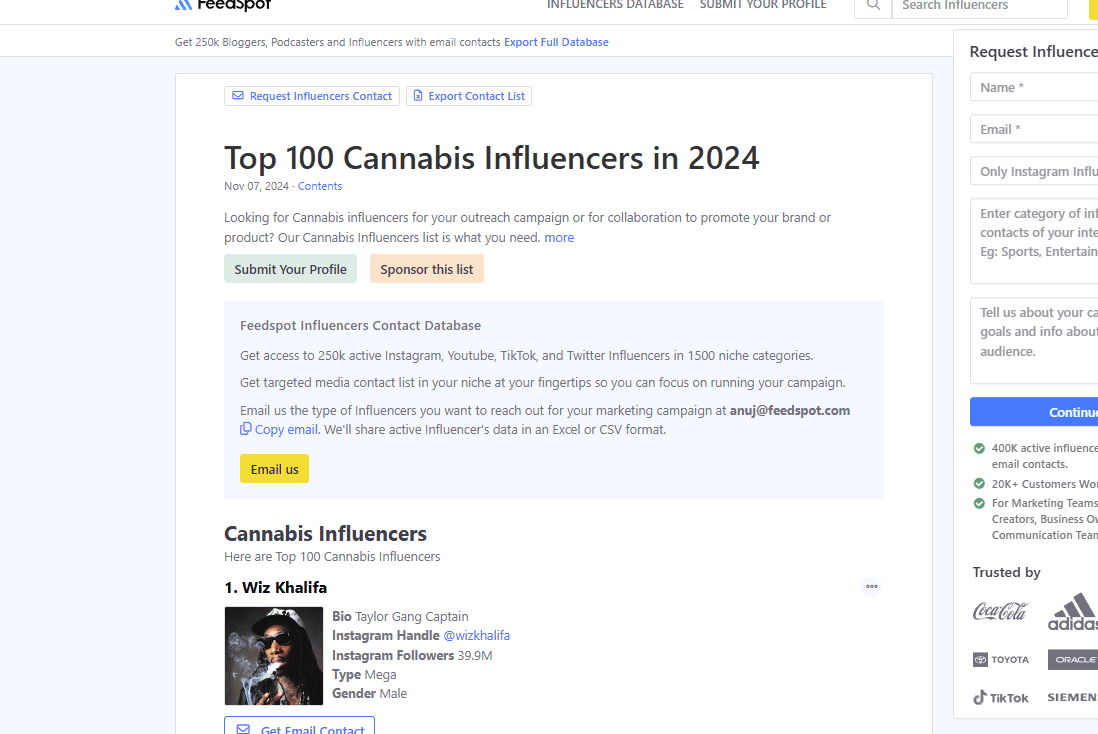
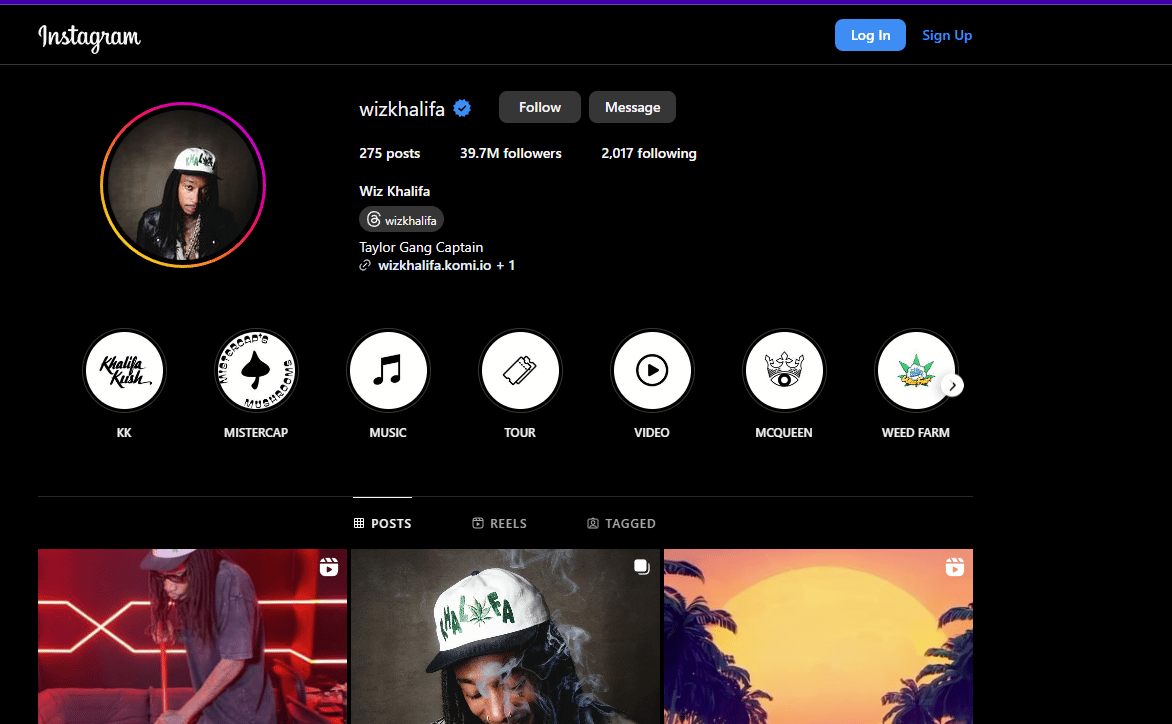
Building Authentic Engagement
Connecting with cannabis influencers is key for cultivating genuine relationships with your audience (Drive Research). These influencers boast loyal followings who trust their recommendations, making it easier for you to introduce your brand in an authentic way.
So, how do you build that engagement?
- Identify the Right Influencers: Focus on those who resonate with your brand values and target audience.
- Foster Genuine Relationships: Engage with their content, offer collaborations that align with their style, and don’t force your message.
- Create Quality Content Together: Collaborate on authentic content that adds value and provides useful information to their followers.
To understand more about how to do this effectively, don’t miss our complete guide to cannabis marketing and SEO (2024).
Expanding Reach
Using cannabis influencers not only builds genuine engagement but also expands your reach organically. This can be far more efficient than traditional advertising methods (Big Sea).
To expand your reach effectively:
- Utilize Multiple Platforms: Don’t just stick to one platform — diversify your influencer partnerships across Instagram, YouTube, and even newer platforms like TikTok.
- Leverage User-Generated Content: Encourage influencers to invite their followers to share their experiences, creating a snowball effect of organic reach.
- Track Performance: Use analytics to understand which influencers and types of content are most effective for expanding your reach.
For a more comprehensive guide on creating and implementing a cannabis SEO strategy from scratch, visit our article on how to create a cannabis SEO strategy from scratch.
Understanding the nuances of influencer marketing within the cannabis industry can significantly elevate your brand. For additional strategies and case studies, check out our section on link building strategies for cannabis businesses.
Boosting Reputation Through Awards
Industry Recognition
In the cannabis industry, earning awards can substantially bolster a brand’s reputation, attracting both consumers and investors (Big Sea). Hosting and participating in industry awards showcases a company’s commitment to excellence and positions it as a leader in the field.
| Benefit | Explanation |
|---|---|
| Attracts Consumers | Awards can signal quality and trustworthiness, drawing more customers to the brand. |
| Attracts Investors | Industry recognition can make the brand more appealing to potential investors. |
| Benchmark for Excellence | Awards set industry standards and push brands to strive for higher quality. |
When planning your cannabis industry content calendar template, consider dedicating campaigns to highlight and celebrate any awards your brand has received. This not only builds credibility but also enhances brand visibility.
Fostering Innovation
Innovation is crucial in maintaining a competitive edge in the rapidly evolving cannabis industry. Awards can play a pivotal role in fostering a culture of innovation by encouraging businesses to push the boundaries of what is possible.
| Innovation Aspect | Impact |
|---|---|
| Collaborative Efforts | Hosting awards spurs collaboration among industry players, leading to groundbreaking solutions. |
| Setting New Standards | Awards create benchmarks that drive industry-wide improvements. |
| Marketing Mileage | Award recognition provides extensive marketing opportunities, showcasing innovative products and practices. |
By incorporating these aspects into your marketing strategy, you can use awards to propel your brand forward. Highlighting innovations can also attract media attention, further boosting your brand’s reputation. Check out our link building strategies for cannabis businesses for more tips on leveraging your award wins for SEO benefits.
For businesses looking to enhance their visibility, winning industry awards is invaluable. Awards not only provide validation but also foster an innovative spirit that can drive the industry forward. Visit our guide on how to create a cannabis SEO strategy from scratch for more insights on strategically incorporating awards into your SEO efforts.
Navigating Social Media Restrictions
Social media can be a tricky landscape to navigate for cannabis business owners. Understanding platform guidelines and developing effective marketing strategies are essential for staying compliant and ensuring your brand’s growth.
Platform Guidelines
Social media platforms have varying community guidelines when it comes to cannabis-related content. Most platforms restrict the promotion or sale of cannabis due to its federal legal status, despite being legal in many states. Here’s a breakdown of the major social media platforms’ guidelines:
| Platform | Restrictions |
|---|---|
| Strict policies against promoting the sale of cannabis. Accounts focused on advocacy and education are allowed, but sales promotions are prohibited. (Flowhub) | |
| More lenient on cannabis content; allows posts that reference sales and promotions if they avoid explicit cannabis-related words and do not directly advertise the sale of cannabis. | |
| TikTok | Prohibits promoting substances like cannabis. Users often use creative alternatives to cannabis-related words and avoid direct depictions of cannabis products or accessories. |
| Similar to Instagram in restricting cannabis sales promotions; allows advocacy and educational content but not direct sales. (Flowhub) |
Marketing Strategies
To effectively market cannabis products on social media while adhering to platform guidelines, several strategies can be employed:
- Educational Content: Focus on creating and sharing educational content about cannabis, its benefits, and its usage. This positions the brand as knowledgeable and compliant with platform guidelines.
- User-Generated Content: Engaging with your audience by encouraging them to share their experiences can amplify your reach while ensuring compliance. Highlight user reviews and testimonials.
- Brand Awareness Campaigns: Since direct sales promotions are often restricted, focus on boosting brand awareness through creative and engaging campaigns. Utilize appealing visuals and storytelling.
- Influencer Collaborations: Partnering with cannabis influencers who have established trust and engagement with your target audience can be a powerful way to expand your reach. Ensure that influencers understand and adhere to platform-specific guidelines.
- Local SEO and Online Presence: Strengthen your local SEO efforts, ensuring that your dispensary is easily found through search engines. Refer to our local seo for dispensaries: step-by-step implementation guide for detailed strategies.
- Creative Workarounds: Use creative alternatives for cannabis-related words (e.g., “herbs” or “green goods”). Employ visual storytelling without direct depictions of cannabis products. Check out our strategies on how to write seo-friendly cannabis content (without getting flagged).
By understanding the platform guidelines and leveraging these strategies, cannabis business owners can effectively navigate social media restrictions and maximize their marketing potential. For further detailed guidance, consider reading our complete guide to cannabis marketing and seo (2024).
Building a Successful Marketing Calendar
Developing an efficient marketing calendar is essential for cannabis business owners aiming to enhance their online presence and grow their brand. Here, I’ll delve into the crucial elements of task delegation and strategic campaigns, ensuring your marketing efforts are well-organized and effective.
Task Delegation
One of the cornerstones of a robust marketing calendar is task delegation. Assigning specific roles to team members not only ensures accountability but also streamlines the process. Here’s how you can effectively delegate tasks within your cannabis business:
- Assign Point People: Each task should have a designated responsible person. This method reduces confusion and allows for clear lines of responsibility.
- Set Deadlines: Establish deadlines to ensure goals are met on time. This keeps the momentum going and helps in tracking progress.
- Backup Plans: Always have contingency plans to address unexpected challenges. This can include alternate content ideas or backup personnel.
Here’s a sample table to help organize delegation tasks:
| Task | Responsible Person | Deadline | Notes |
|---|---|---|---|
| Blog Writing | Jane Doe | 10/15/2023 | Focus on SEO keywords |
| Social Media Posts | John Smith | 10/20/2023 | Use high-engagement hashtags |
| Email Campaigns | Mary Johnson | 10/18/2023 | Target new subscribers |
For more on effectively delegating tasks, check out our guide on how to create a cannabis SEO strategy from scratch.
Strategic Campaigns
Strategic campaigns form the backbone of any successful marketing calendar. Crafting and executing these campaigns require careful planning and alignment with your overall business goals. For cannabis businesses, strategic campaigns should aim to enhance brand awareness and foster customer engagement.
Components of a Strategic Campaign:
- Master Marketing Calendar: Provides an overview of all marketing activities and integrates sub-components for a cohesive strategy. (Coalition Technologies)
- Blog/Editorial Calendar: Focuses on content planning for your blog, ensuring that your posts are timely and relevant. Check out our on-page SEO guide for dispensary websites for tips.
- Email Marketing Calendar: Coordinates email campaigns to target specific audience segments and deliver personalized content.
- Social Media Marketing Calendar: Plans out social media content to maintain consistent posting and engagement.
By carefully planning and executing strategic campaigns, you’ll be able to stand out in the competitive cannabis market. For additional insights on cannabis content and SEO integration, have a look at our articles on complete guide to cannabis marketing and seo (2024) and link building strategies for cannabis businesses.
In summary, building a successful marketing calendar involves effective task delegation and well-planned strategic campaigns. Utilize the tools and resources available to ensure that your cannabis marketing efforts are both efficient and impactful.
FAQ: Cannabis Content Calendar Template Revealed
1. What is a cannabis content calendar template?
A cannabis content calendar template is a pre-designed framework that helps cannabis businesses plan and organize their content marketing efforts. It outlines the schedule for creating and publishing content across various platforms, ensuring consistency and strategic alignment.
2. Why is a content calendar essential for cannabis businesses?
A content calendar streamlines the content creation process, ensuring timely and relevant posts. It helps maintain a consistent brand voice, aligns content with marketing goals, and allows for proactive planning around industry events and trends.
3. What should be included in a cannabis content calendar template?
Key components include:
- Date and Time: When each piece of content will be published.
- Content Type: Blog posts, social media updates, videos, etc.
- Platform: Website, Instagram, Facebook, etc.
- Topic or Theme: The focus of the content.
- Responsible Party: Who is creating or managing the content.
- Status: Draft, in review, scheduled, or published.
This structure ensures comprehensive planning and accountability.
4. How can I customize a cannabis content calendar template?
Many templates are available in editable formats like Google Sheets or Excel, allowing you to tailor them to your specific needs. You can adjust columns, add color-coding, and incorporate additional fields relevant to your marketing strategy.
5. Are there pre-made cannabis content calendar templates available?
Yes, several resources offer customizable templates:
- Cannabis Marketing School: Provides a 30-day social media calendar tailored for cannabis retailers.
- Etsy: Offers a 2024 cannabis content calendar that can be customized in Canva.
These templates can serve as a starting point for your content planning.
6. How often should I update my cannabis content calendar?
Regular updates are crucial. Review and adjust your calendar monthly to incorporate new trends, industry events, and performance insights, ensuring your content remains relevant and effective.
7. Can a content calendar help with compliance in cannabis marketing?
Yes, a well-structured content calendar allows you to plan and review content in advance, ensuring adherence to legal and regulatory requirements specific to cannabis marketing.
8. How can a content calendar improve team collaboration?
By clearly assigning responsibilities and deadlines, a content calendar fosters collaboration among team members, ensuring everyone is aligned and aware of their tasks, leading to more efficient content production.
9. What are the benefits of using a content calendar for social media marketing?
A content calendar helps schedule posts, maintain consistency, and plan campaigns around key dates, leading to more organized and effective social media marketing efforts.
10. How can I measure the effectiveness of my content calendar?
Track metrics such as engagement rates, website traffic, and conversion rates to assess the impact of your content. Regular analysis allows for adjustments to improve performance over time.
